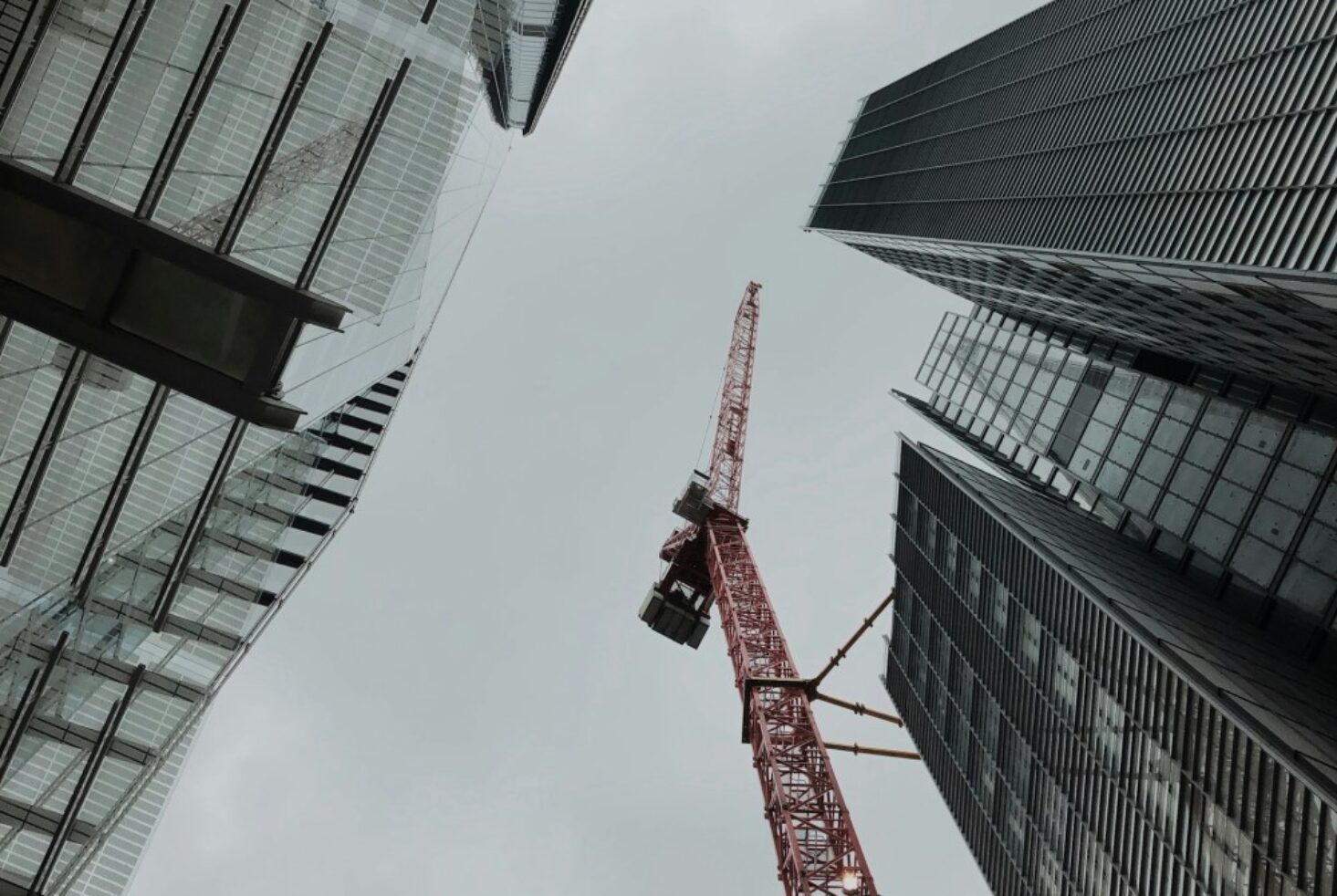
The History Of Bermondsey: From Tanneries To Trendy Hotspot
Welcome to Bermondsey, a neighborhood steeped in history and brimming with character. From its humble beginnings as an industrial hub known for its tanneries to its transformation into a trendy hotspot, Bermondsey has undergone a remarkable evolution over the years.
Join us as we delve into the rich history of Bermondsey and uncover the stories that have shaped this vibrant community.
Bermondsey’s history can be traced back centuries, with its roots deeply intertwined with the leather industry. In the 19th century, Bermondsey was home to numerous tanneries and leather factories, earning it the nickname “Leather Market.” The area thrived as a center of industry, attracting workers and merchants from far and wide.
As the leather industry declined in the 20th century, Bermondsey underwent a period of urban renewal and regeneration. Today, the neighborhood has emerged as a trendy hotspot, known for its eclectic mix of boutiques, galleries, and restaurants.
Explore the charming streets of Bermondsey Street, lined with artisanal shops and cafes, or discover the area’s top attractions, including the iconic Tower Bridge and the historic Bermondsey Abbey.
But beyond its bustling streets and trendy eateries, Bermondsey is also home to hidden corners waiting to be discovered. Wander off the beaten path and uncover the neighborhood’s hidden gems, from tranquil parks to quirky art installations.
Explore the hidden corners of Bermondsey and immerse yourself in the unique charm of this vibrant community.
For families looking for a day out in Bermondsey, there’s no shortage of activities to enjoy. Spend a leisurely afternoon exploring one of the neighborhood’s many parks or embark on a family-friendly adventure at one of its attractions.
Whether you’re exploring its rich history, strolling along its picturesque streets, or simply enjoying a day out with loved ones, Bermondsey offers something for everyone.
The History of Bermondsey
Bermondsey, situated in south-east London, boasts a fascinating past that can be traced back to Roman times. Over the centuries, this area has undergone remarkable transformations, transitioning from being a hub for tanneries during the 16th century to emerging as a vibrant and fashionable destination today.
Throughout the Victorian era, Bermondsey experienced extensive industrialization, with warehouses and factories dominating its landscape. However, in recent times, this neighborhood has experienced a renaissance, as old structures have been repurposed into trendy shops, charming cafes, and captivating art galleries.
The rich history of Bermondsey serves as a testament to its remarkable resilience and its exceptional ability to adapt to the ever-changing times.
Early Days: Bermondsey as a Rural Area
In its early days, Bermondsey was a rural area characterized by farmlands and open spaces. Located on the south bank of the River Thames, it was known for its agricultural activities, such as farming and animal husbandry. The community thrived on farming and relied on the land for sustenance.
With its picturesque landscapes and natural beauty, Bermondsey attracted settlers seeking a rural lifestyle away from the hustle and bustle of the city.
Over time, however, urbanization and industrialization transformed Bermondsey into the vibrant and trendy hotspot it is today.
What was the original name of Bermondsey?
The original name of Bermondsey was “Beormund’s Island”. It was derived from the Old English name “Beormundesgea” which means “Beormund’s inlet”. The name refers to the area being an island surrounded by marshland and the River Thames. Over time, the name evolved to Bermondsey.
The history of Bermondsey dates back to early medieval times when it was primarily a rural area. It later became an industrial hub known for its flourishing tanneries.
Today, Bermondsey has transformed into a trendy hotspot with notable attractions and developments while still preserving its historical heritage.
When did people start settling in Bermondsey?
People began settling in Bermondsey during ancient times, specifically during the Roman period. The region was referred to as “Beornmund’s island” in Old English before eventually transforming into “Bermondsey.”
Due to its advantageous location on the banks of the River Thames, early inhabitants were attracted to the area for trading and transportation purposes. Over time, Bermondsey experienced significant growth and progress, ultimately becoming an industrial center renowned for its thriving tanning industry.
Presently, Bermondsey has transformed into a fashionable destination, blending historical significance with contemporary advancements.
Becoming an Industrial Hub: Bermondsey’s Tanneries
Bermondsey’s transformation into an industrial hub can be attributed to its thriving tannery industry, which played a crucial role in the local economy. The area’s favorable location near the river and abundant supply of water made it an ideal location for tanneries to develop, thus becoming an industrial hub.
The tanneries employed a significant number of people and produced leather goods such as shoes, belts, and bags, which were in high demand during that time.
Furthermore, Bermondsey’s tanneries not only contributed to the growth and prosperity of the area but also attracted workers from other parts of the country, solidifying its position as an industrial hub with its flourishing tanneries.
When did the tanning industry flourish in Bermondsey?
The tanning industry in Bermondsey flourished during the 17th century when there was a plentiful supply of water from the River Thames, making it an ideal location for tanneries to thrive. It became a major hub for tanning due to the expansion of trade and demand for leather goods.
The advancements in technology during the Industrial Revolution further boosted the industry, allowing for increased production and efficiency. However, by the late 19th century, pollution and competition from other areas led to the decline of tanneries in Bermondsey.
Today, the area is known for its transformation into a trendy hotspot while still preserving its historical heritage.
What were the major advancements in the tanning industry in Bermondsey?
In the tanning industry, Bermondsey experienced significant advancements during its peak. Some major innovations included the adoption of mechanical processes for leather production, such as steam-powered machinery, which greatly increased efficiency and output.
Bermondsey tanneries also embraced technological improvements like the invention of chrome tanning, which revolutionized the leather finishing process. This method allowed for the production of softer, more flexible, and durable leather compared to traditional methods.
The introduction of chemical dyes and finishes expanded the range of colors and textures available, meeting the growing demands of consumers. These advancements propelled Bermondsey’s tanning industry to become a prominent player in the global leather market.
The major advancements in the tanning industry in Bermondsey were the adoption of mechanical processes, the invention of chrome tanning, and the introduction of chemical dyes and finishes.
These innovations greatly improved efficiency, softness, flexibility, durability, and expanded the range of colors and textures available, meeting the growing demands of consumers and establishing Bermondsey as a prominent player in the global leather market.
The Decline of Tanneries and Urban Development
When examining the decline of tanneries and the subsequent urban development in Bermondsey, the phenomenon of urban development comes into play alongside the decline of the tanneries. Several factors contribute to this transformation.
The closure of tanneries caused a shift from industrial to residential use of land, altering the landscape of the area. This transition was made possible and supported by the government’s urban development plans, which were put in place with the aim of revitalizing the entire region.
The availability of abandoned tannery buildings played a vital role in attracting artists and entrepreneurs who were looking for affordable spaces to establish their creative ventures.
Consequently, Bermondsey underwent a remarkable metamorphosis, becoming a trendy hotspot with the emergence of new businesses, galleries, and eateries that greatly contributed to the overall urban development of the area.
What factors led to the decline of the tanning industry in Bermondsey?
Several factors led to the decline of the tanning industry in Bermondsey. One significant factor was the introduction of cheaper alternatives to leather, such as synthetic materials, which resulted in a decrease in demand for leather goods and impacted the profitability of the tanneries.
Additionally, stricter regulations on pollution control and waste management imposed financial burdens on tannery owners. The rise of urban development also played a role, as the expansion of residential and commercial areas encroached upon the tanneries’ operations.
Ultimately, a combination of economic, environmental, and societal changes contributed to the decline and eventual closure of many tanneries in Bermondsey.
How did urban development transform Bermondsey?
Urban development has played a pivotal role in transforming Bermondsey. The growth of industries and factories in the 19th century caused a decline in the tanning industry, which subsequently created ample space for new urban development.
This led to increasing urbanization, resulting in the construction of residential buildings, shops, and various commercial establishments. As a result, Bermondsey underwent a remarkable transformation, emerging as a vibrant hotspot.
Notable attractions like the Bermondsey Beer Mile and the iconic Tower Bridge have contributed to this transformation. Interestingly, the area has successfully preserved its historical heritage by repurposing old warehouses and buildings, seamlessly blending them with modern architectural designs.
It is undeniable that urban development has revitalized Bermondsey, making it an attractive destination for both residents and visitors.
Modern Bermondsey: A Trendy Hotspot
Modern Bermondsey has transformed into a trendy hotspot, making it a popular destination for visitors. With its vibrant atmosphere and diverse range of attractions, including artisanal coffee shops, trendy boutiques, and hip restaurants, there is something to suit every taste.
Additionally, Modern Bermondsey is renowned for its thriving art scene, with several art galleries and cultural spaces showcasing the creativity and innovation of local artists.
Whether you’re exploring the stylish Maltby Street Market, enjoying a cocktail at one of the trendy bars, or immersing yourself in the contemporary art scene, Modern Bermondsey truly offers a unique and exciting experience for both residents and visitors.
When and why did Bermondsey become a trendy area?
Bermondsey became a trendy area due to its unique combination of history, cultural attractions, and urban revitalization efforts. The transformation began in the late 20th century when old warehouses and factories were converted into stylish apartments, cafes, and art galleries.
The area’s popularity among young professionals and artists was further enhanced by its proximity to central London and vibrant food markets like Maltby Street.
One can understand when and why Bermondsey became a trendy area by considering its historical heritage, such as the iconic Tower Bridge and the Bermondsey Street Conservation Area, which add charm and character to the neighborhood. As a result, both locals and tourists are attracted to the area’s allure.
What are some notable attractions and developments in modern Bermondsey?
Modern Bermondsey is known for its range of notable attractions and developments. If you’re looking for places to visit, make sure to check out Bermondsey Street. This vibrant street is famous for its trendy bars, restaurants, and art galleries.
Another popular spot is Bermondsey Square, a hub for socializing where you can enjoy the weekly antiques market and catch a movie at the cinema. Don’t miss the chance to visit the Fashion and Textile Museum, which offers a fascinating glimpse into the history of fashion and textiles.
And for all the beer enthusiasts out there, the Bermondsey Beer Mile is a must-visit. You’ll find several independent breweries offering tastings and tours. All these attractions and developments contribute to the lively and fashionable atmosphere of modern Bermondsey.
How has Bermondsey preserved its historical heritage while embracing modern trends?
Bermondsey has successfully preserved its historical heritage while embracing modern trends by transforming old industrial buildings into trendy spaces.
The area’s iconic Leathermarket building, for example, now houses a vibrant community of artists, designers, and businesses. Bermondsey maintains its historical charm through the preservation of landmarks like the Bermondsey Wall and the well-preserved streets of Shad Thames.
With its mix of trendy restaurants, bars, and boutiques, Bermondsey has managed to strike a balance between preserving its historical character and attracting modern visitors.
Suggestions for visitors include exploring the Bermondsey Antique Market and taking a stroll along the Thames Path to experience Bermondsey’s unique blend of history and modernity.
Frequently Asked Questions
What is the industrial history of Bermondsey?
Bermondsey has a rich industrial history, particularly in the leather-making industry. It was the leather capital of Britain in the 18th and 19th centuries, with a significant portion of the country’s leather being produced in the area. Bermondsey also had other industries such as hat making, timber yards, and hop warehouses.
What factors contributed to Bermondsey’s success in the leather-making industry?
Bermondsey’s success in the leather-making industry can be attributed to several factors. The area had a fresh water supply, good transport connections, and a growing market, which were all essential for the production and distribution of leather. Additionally, Bermondsey had cheap labor costs and highly skilled workers, making it an ideal location for the leather industry to thrive.
Who is the Old Map Man and what is his expertise?
The Old Map Man, also known as Ken Titmuss, is a local historian who offers guided walks to explore the history and origins of Bermondsey. He is an expert in historic maps and provides expert knowledge on the area’s development and changes over time.
What is the significance of Tanner Street in Bermondsey?
Tanner Street in Bermondsey is the location of the Eames Fine Art Studio, which is housed in an old warehouse with a rich history. The building was originally a leather treatment warehouse, and it retains some original features such as high-level barn doors, a winch pole, and loading platforms. It is a testament to the area’s heritage as a hub of leather production.
How has Bermondsey transformed from an industrial area to an upmarket neighborhood?
Bermondsey has undergone a significant transformation from its industrial past to become an upmarket neighborhood. The area has been gentrifying rapidly, with the development of upmarket cafes, galleries, and craft shops. The rebuilding of London Bridge station has also played a role in raising property prices and attracting redevelopment projects, transforming the area into a prime real estate location.
What are some notable landmarks and spots to visit in Bermondsey?
When exploring Bermondsey, there are several notable landmarks and spots to visit. These include the Simon the Tanner pub, known for its traditional barbers and serving a delicious Sunday roast. There are also historic spots on Bermondsey Street, where you can enjoy a coffee and immerse yourself in the area’s rich history. Additionally, visiting the Eames Fine Art Studio and participating in a guided walk with the Old Map Man are great ways to further explore the area’s heritage.




